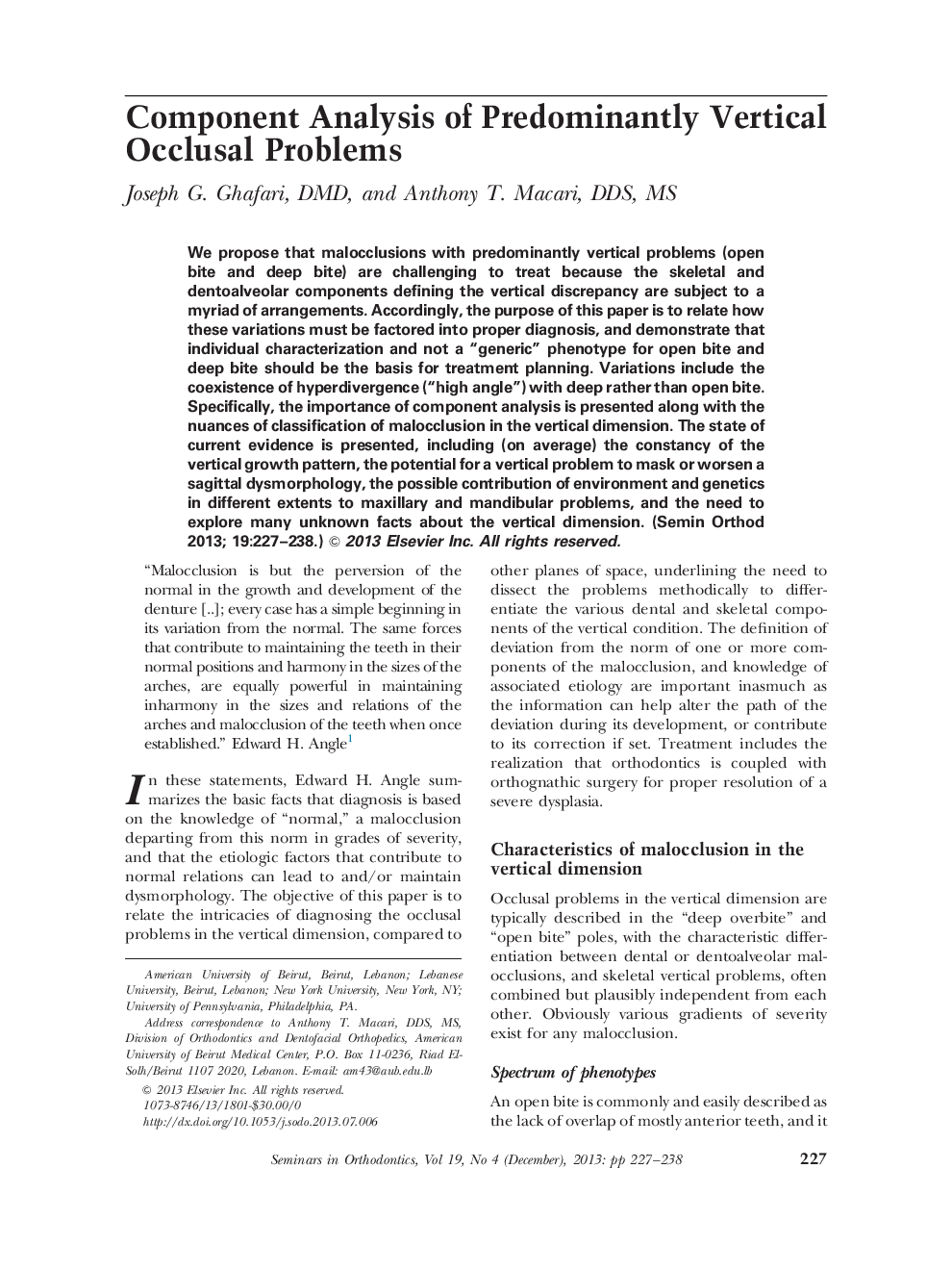| Article ID | Journal | Published Year | Pages | File Type |
|---|---|---|---|---|
| 3175450 | Seminars in Orthodontics | 2013 | 12 Pages |
We propose that malocclusions with predominantly vertical problems (open bite and deep bite) are challenging to treat because the skeletal and dentoalveolar components defining the vertical discrepancy are subject to a myriad of arrangements. Accordingly, the purpose of this paper is to relate how these variations must be factored into proper diagnosis, and demonstrate that individual characterization and not a “generic” phenotype for open bite and deep bite should be the basis for treatment planning. Variations include the coexistence of hyperdivergence (“high angle”) with deep rather than open bite. Specifically, the importance of component analysis is presented along with the nuances of classification of malocclusion in the vertical dimension. The state of current evidence is presented, including (on average) the constancy of the vertical growth pattern, the potential for a vertical problem to mask or worsen a sagittal dysmorphology, the possible contribution of environment and genetics in different extents to maxillary and mandibular problems, and the need to explore many unknown facts about the vertical dimension.
